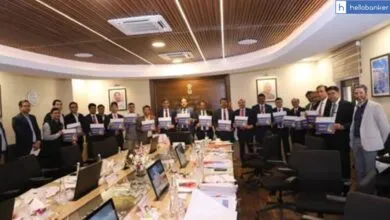Inflation in India to remain around 5%, Read SBI Report

According to a research report by SBI, the Consumer Price Inflation (CPI) in India is anticipated to hover around 5 percent throughout the financial year 2024-25, with the exception of September and October. The recent CPI inflation data for June 2024, which registered a rise to 5.08 percent, highlights the impact of increased food and beverage prices.
Role of Monsoon and Food Prices
The report emphasizes the significant role of the monsoon season in influencing food prices. Although the current monsoon has demonstrated a satisfactory surplus, there is concern that excess rainfall might lead to crop losses, thereby exacerbating food inflation. The monsoon’s progress and its effects on Kharif crops are pivotal in shaping the inflationary trends.
RBI’s Inflation Management
The Reserve Bank of India (RBI) remains focused on managing inflation expectations while balancing economic growth and price stability. The report notes that with a satisfactory monsoon, showing a 2 percent surplus to date, and a 2.9 percent year-on-year increase in Kharif crop coverage, inflation is expected to stay within the RBI’s target range for FY25. Nonetheless, the potential impact of La Nina, leading to excess rainfall and subsequent crop losses, could negatively affect food prices.
RBI’s Policy Stance and Challenges
In response to the current economic conditions, the RBI is likely to persist with its policy of withdrawing accommodation to address inflationary pressures while supporting economic growth. However, the RBI faces challenges in policy transmission. Despite a decreasing weighted average lending rate (WALR), deposit rates have shown downward rigidity, complicating effective monetary policy implementation. The report highlights that the WALR on fresh rupee loans decreased by 11 basis points from 9.43 percent in January 2024 to 9.32 percent in June 2024.
Future Considerations
Looking ahead, the RBI’s monetary policy decisions will be influenced by both domestic and global economic conditions. Factors such as the potential for a US recession and geopolitical tensions may impact inflation dynamics in India. The RBI will need to maintain a flexible and responsive monetary policy to achieve its inflation targets and support sustainable economic growth amidst these external uncertainties.
